Flow Community Console by Flipside Crypto
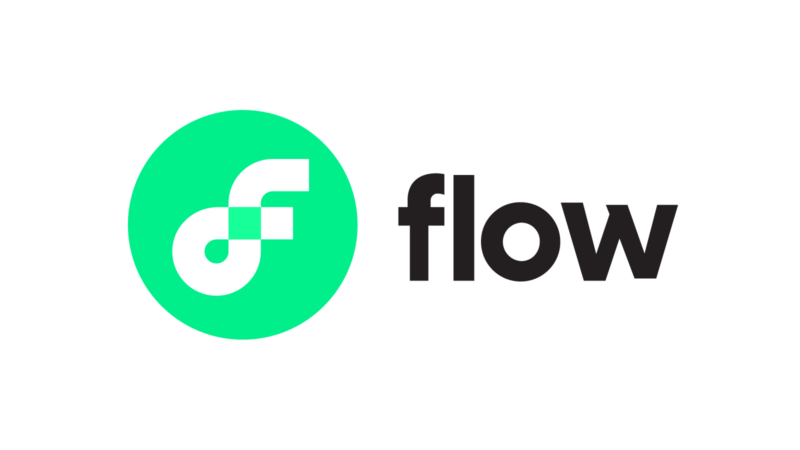
NFTs have gained immense popularity as reflected in soaring sales of over $2.5 billion in volume in just the first half of 2021. Launched by Dapper Labs, Flow is a blockchain that powers some of the most popular applications in crypto, NFTs, and gaming. In 2017, Dapper Lab’s CryptoKitties a rather popular and one of the first NFT projects brought the entire Ethereum blockchain to a halt by escalating congestion to unimaginable levels prompting the development of FLOW. That brought out the necessity of transitioning onto PoS consensus as opposed to PoW if blockchain was to find mainstream adoption and scalability.
Dapper saw an opportunity and decided to act on it instead of simply shifting its dApp to another blockchain or waiting for Ethereum scaling solutions to come into existence. The first-hand experience helped Dapper ascertain existing blockchain networks weren’t equipped with the capabilities required for handling the growing demand.
And so Flow was born.
Designed with the objective of reducing complexities in existing networks, providing fast and low-cost transactions, Flow is a developer-centric blockchain primed for apps, games, and other digital assets. It assures extensive scaling without the use of sharding techniques.
Flow Community Console by Flipside Crypto
Flipside Crypto’s Flow community console is a real-time metrics dashboard for Flow blockchain. It is designed to help Flow users and observers develop a better understanding of the Flow ecosystem and its stakeholders through various on-chain data points and visual representations.
Ecosystem
Ecosystem on Flow refers to all the information related to FLOW which is the native fungible token. It provides all the data with respect to token supply, token transfers, user accounts, and contract activity. The most critical metrics for growth (like transactions, volume, and accounts) change over time and the community console gives an insight into it. These metrics collectively represent the health of the network.
Stakeholders
The Flow stakeholders can be any no of individuals or groups from around the world. The analysis displays the big players and the most influential groups in the FLOW token ecosystem. It provides analysis of different FLOW user segment activity interactions with Top Holders, Exchanges, the Foundation, and Smaller wallets (users).
The default date selection for data display is 90 days. Users can select data for the last 7, 30, 90, 180 days, or any other customized date selection.
Understanding the Dashboards and Data Analysis
1. Transactions?—?This is the basic indicator of Flow’s network activity. The dashboard shows both the number of transactions and the type of transactions. Let’s dig in a little deeper.
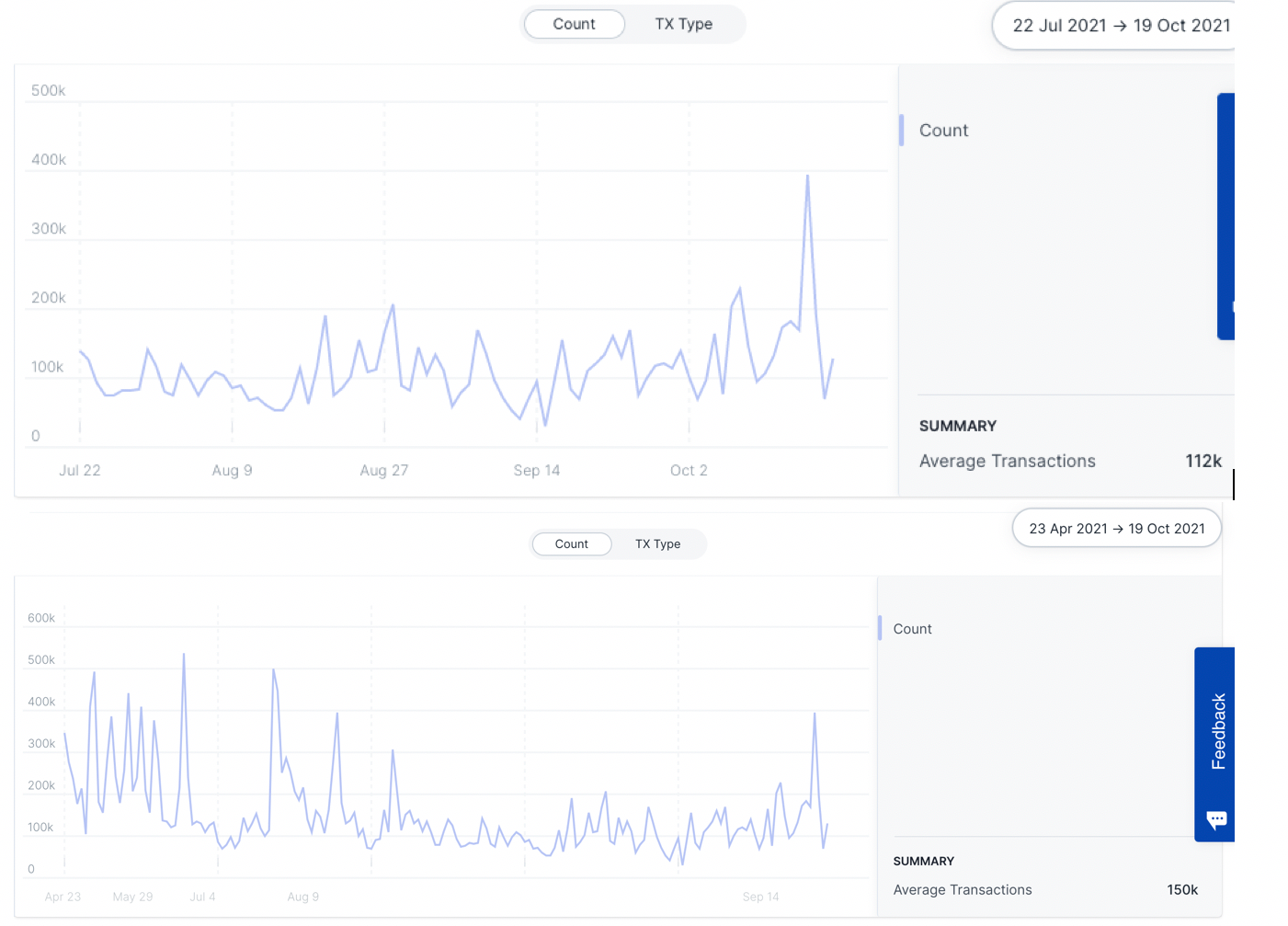
A comparison of the daily average transactions for the last 180 days versus the last 90 days shows a decrease from 150K to 112K.

The last spike in no of transactions is on 16 Oct 2021 where the no of transactions jumped to 395K.
The transactions are also listed as per the type – purchases, withdrawals, deposits, minted, listed, others. Let us compare the transactions based on the type.
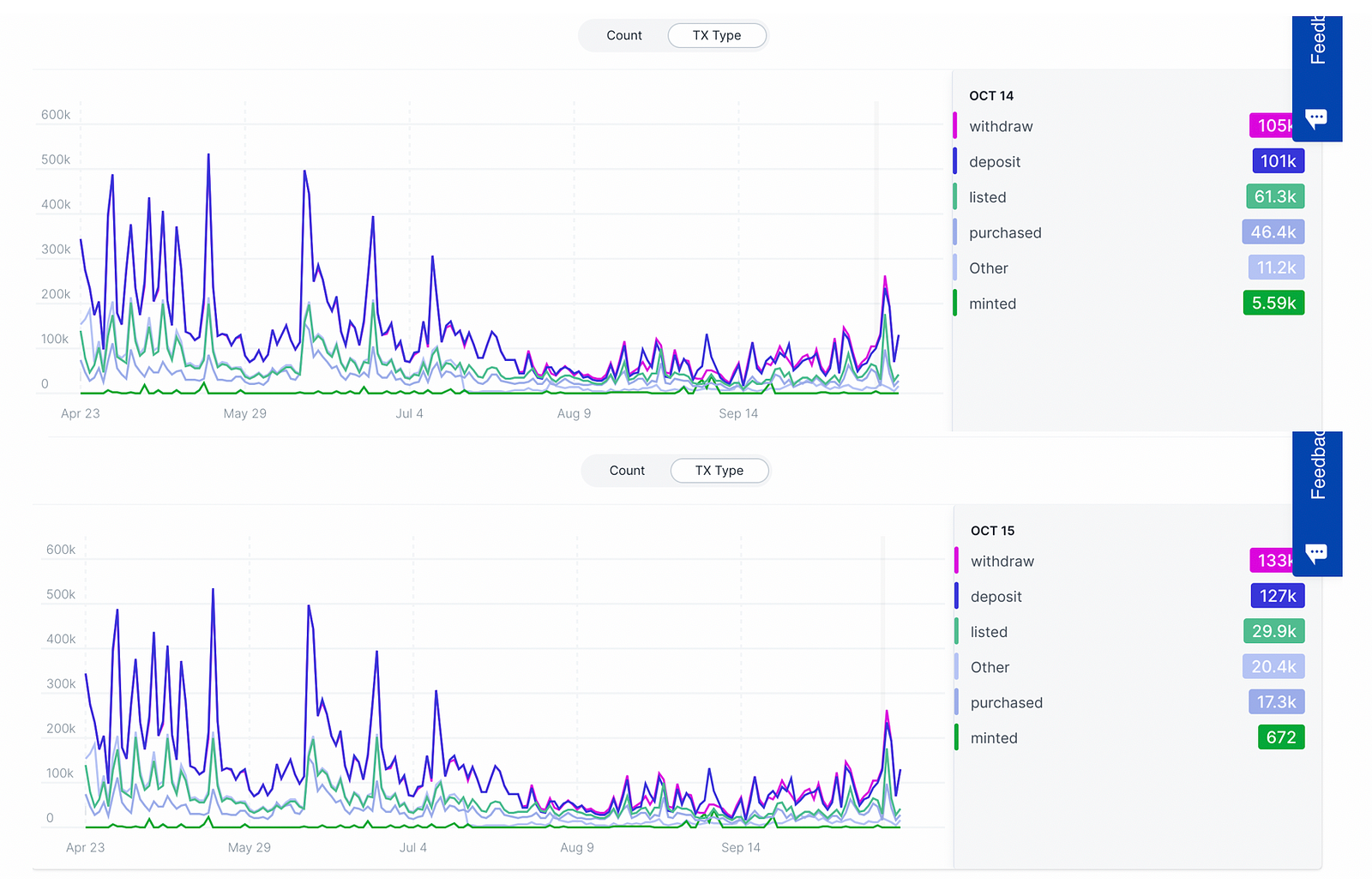
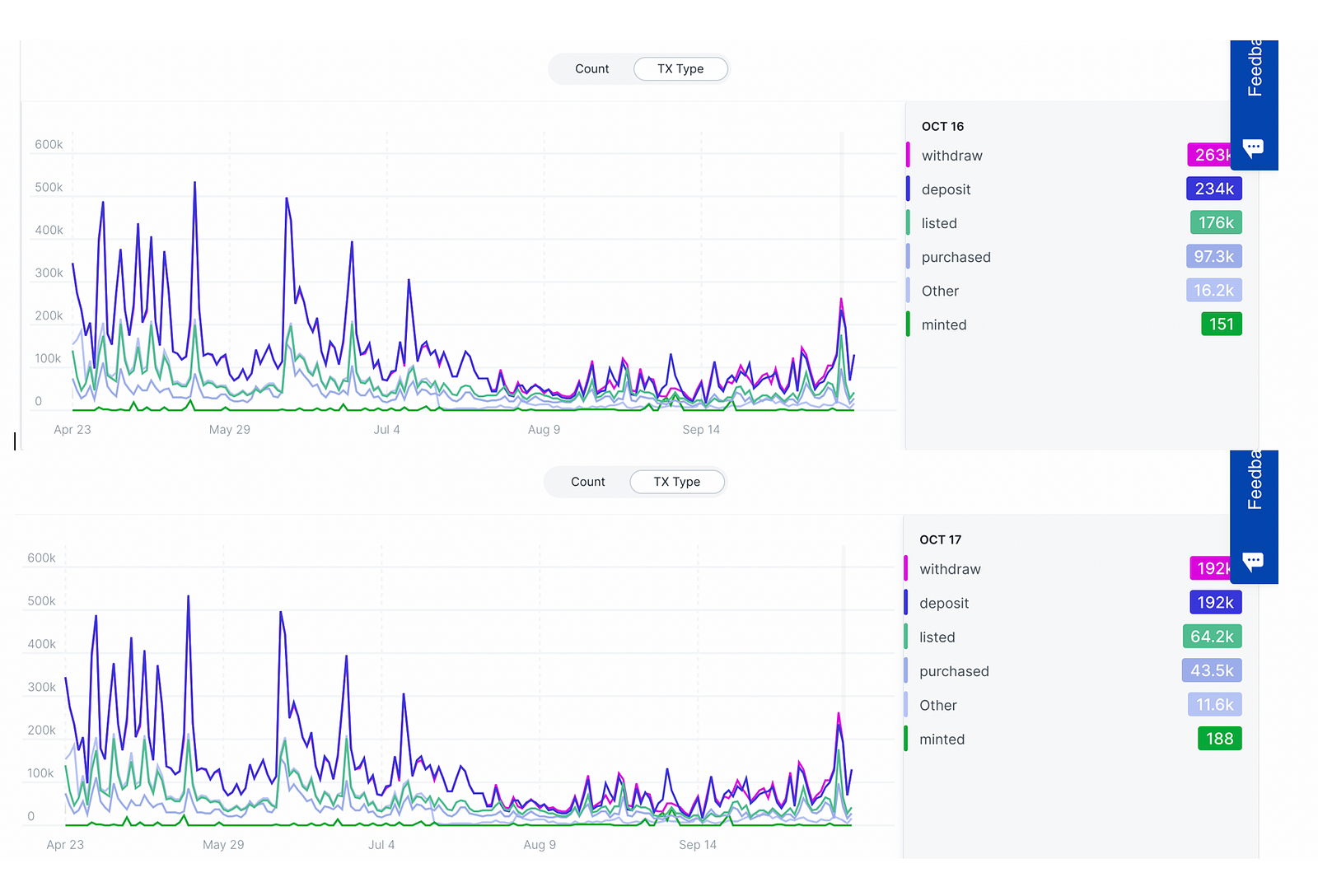
A comparison of these different types of transactions reveals the following information –
- The number of withdrawals exceeds the number of deposits.
- The spikes coincide with NFT drops (NBA top shot on 15 Oct).
- Flow tokens unlock on 16 Oct resulted in an increase in withdrawals and deposits compared to the figures of the previous couple of months.
2. Accounts?—?Data with respect to the unique user count helps in tracking the adoption of the blockchain and its underlying technology. Let’s analyze the data using a combination of the total, active and new accounts. It will help in deriving a better representation of user growth and active participation. The data can be selected daily, weekly, and monthly.



- The total number of unique accounts that have made at least one transaction on Flow blockchain is 2.36M. The number of transactions has increased from 1.65M (May) to 2.37M (Present).
- The number of active accounts has been on a decline since the start of the bull cycle this year.
- The number of new accounts being created has been on the decline as well.
Both the active participation and the no of new accounts have been reducing since the start of the bull cycle.
3. Transaction Inclusion Fees?—?This displays the cumulative and daily transaction fees that the validator nodes receive for securing and supporting the network. Transaction fees have just been turned on and enabled on Mainnet. A flat fee of 0.00001 FLOW is applied to every transaction submitted to the network.
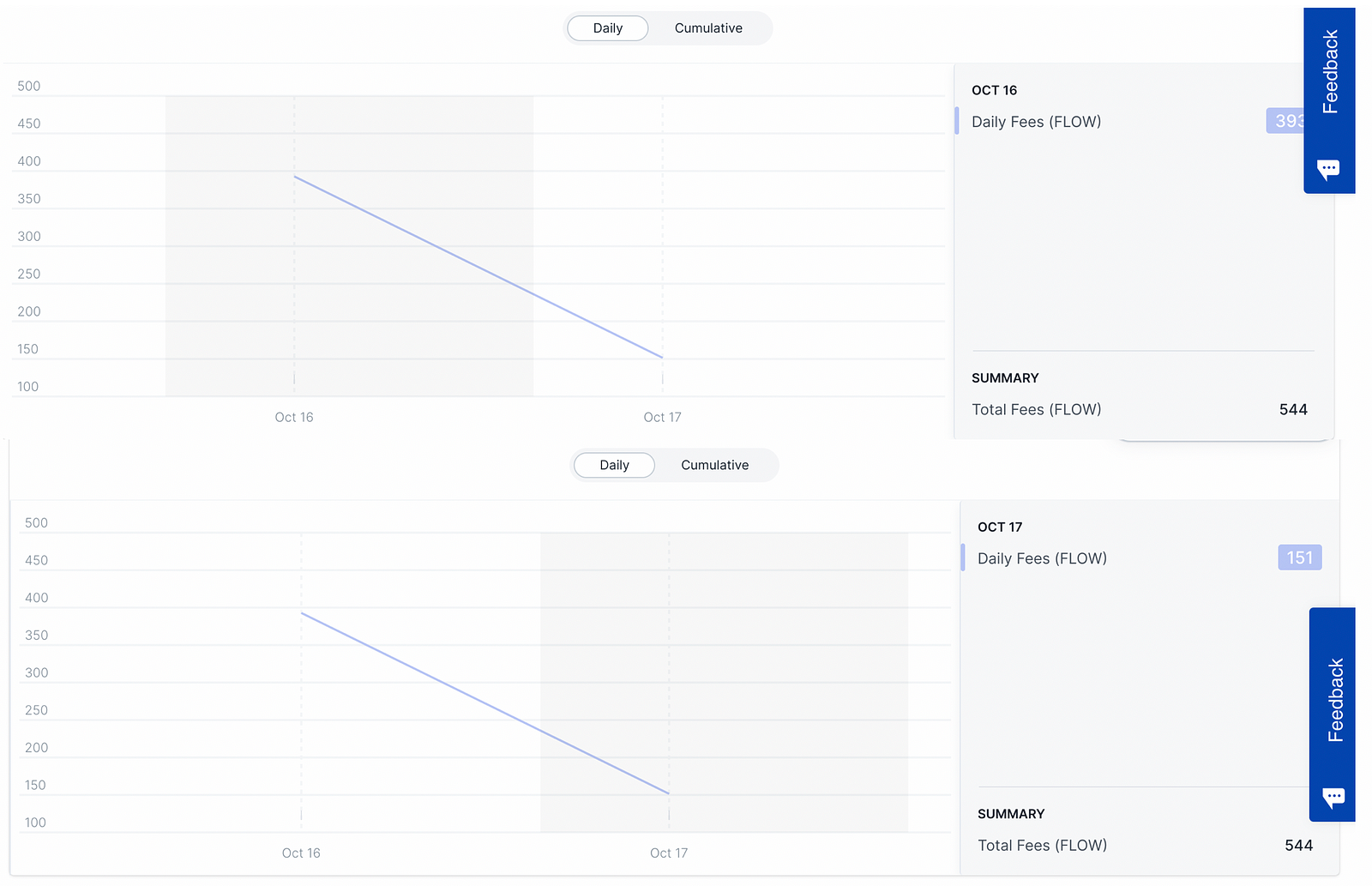
The cumulative fees collected so far are 544 FLOW with 393 FLOW on 16 Oct and 151 on 17 Oct.
4. NFTs?—?This displays the number of unique, total, listed/purchased, and top-selling NFTs on the FLOW network. It also helps in understanding how usage is changing over time.
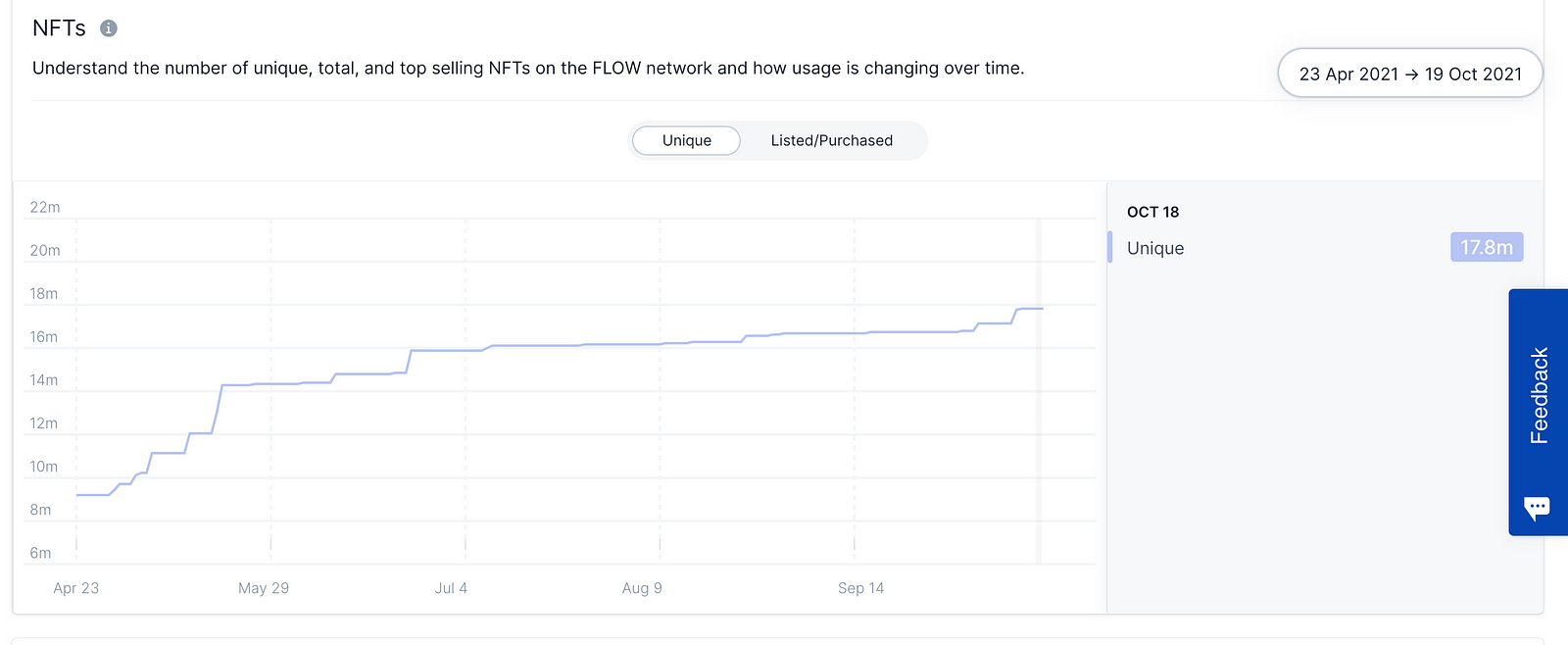
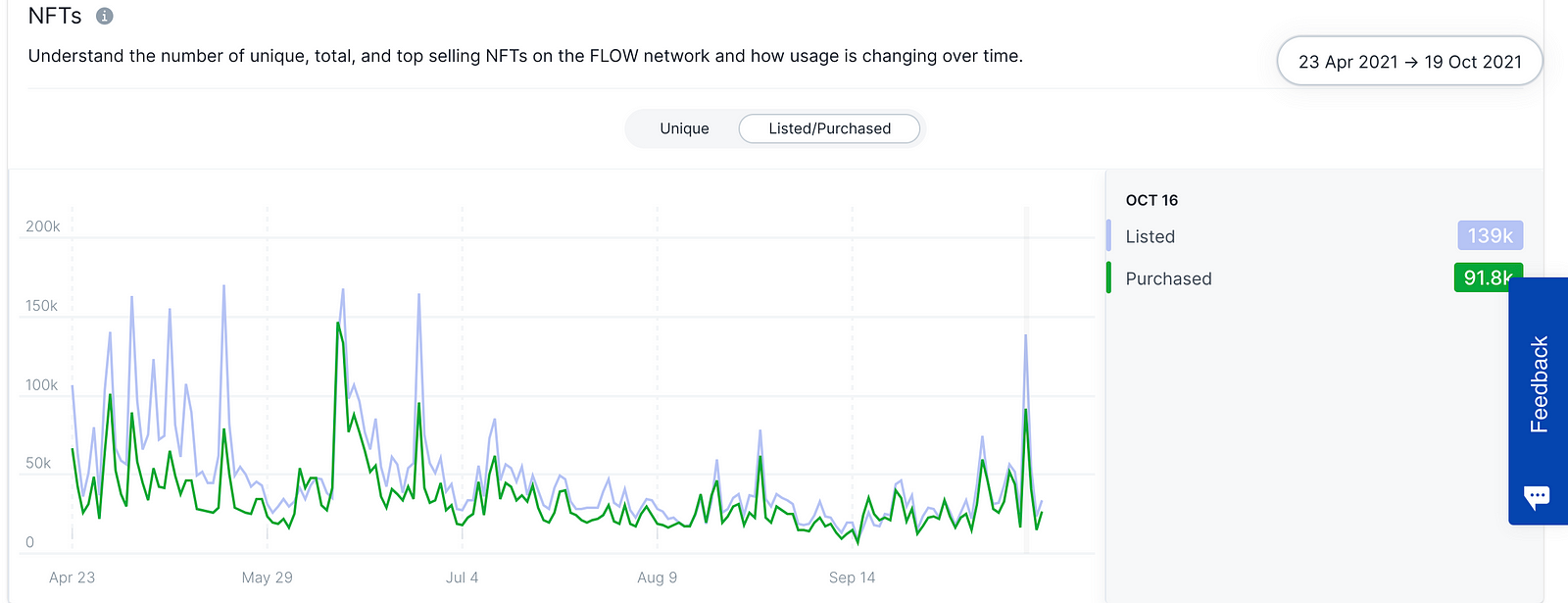
The number of unique NFTs on Flow is around 17.8M. The ratio of the listed and the purchased NFTs is extremely healthy with most of the listed NFTs selling out on the same day itself.

The top 10 NFT sales on Flow as displayed in the table are all TopShot.
5. Supply?—?Flow blockchain launched on Beta Mainnet on May 15, 2020, with 1.25 Billion FLOW created at genesis. It displays the total supply of FLOW tokens with emphasis on significant changes occurring as token balances shift between user groups.
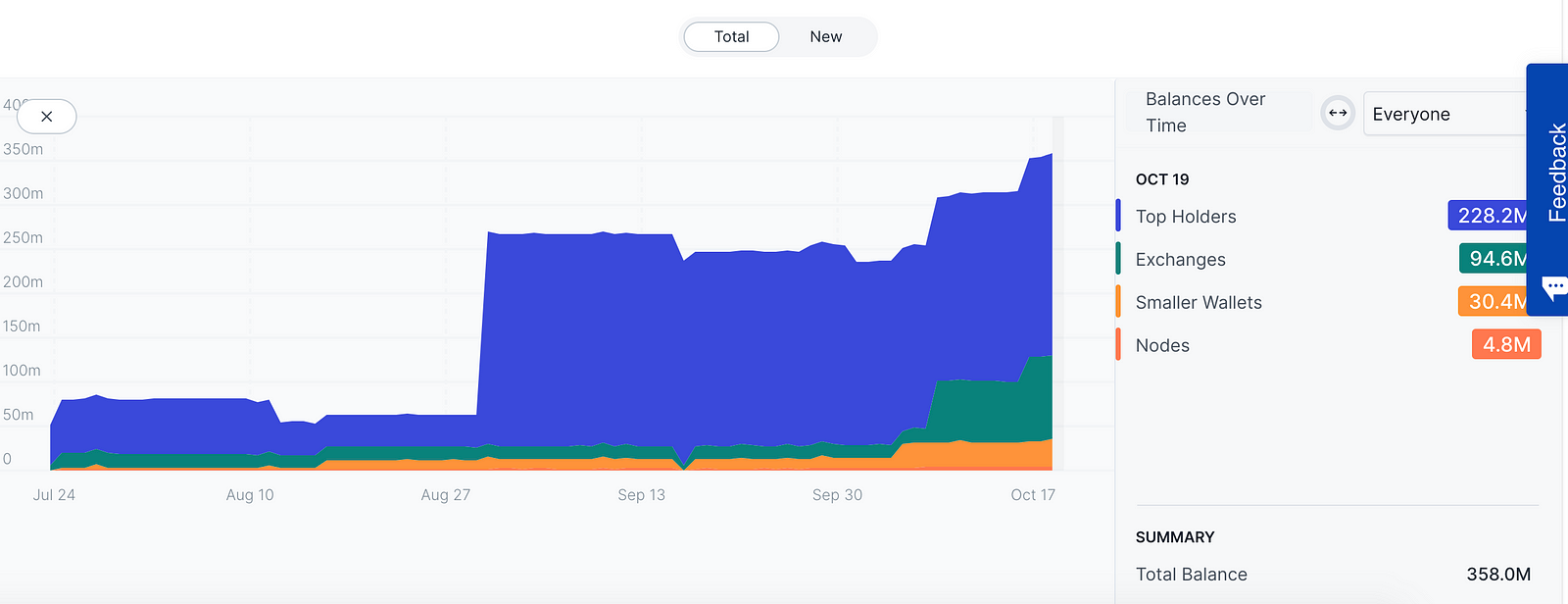
The top holders hold 228.2M FLOW, smaller accounts 30.4M, exchanges 94.6M (coinlist 71.9M), and nodes 4.8M from a total balance of 358M within the selected time period.
Further information about the token holders can be found in the stakeholder part of the console.
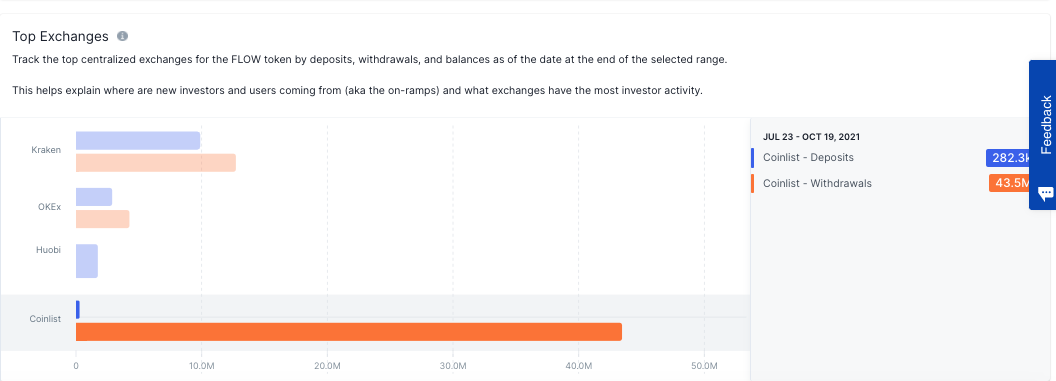
Flipside Crypto empowers the Flow community with this Console that will help all the participants with accurate on-chain data that will be used in creating helpful dashboards.
Conclusion
Designed to support digital collectibles and blockchain-driven games, Flow Blockchain is prepared to cater to an audience that is bound to grow exponentially owing to the success of NFTs. Flow is ideal for developers as it is positioned to attract new and interactive third-party projects with its novel design and multi-node architecture that offers a scaling alternative to sharding and sidechains. Its partnership with heavyweights like Ultimate Fighting Championship (UFC), CNN, Samsung, game publisher Ubisoft, and Warner Music Group amongst others is testimony to its success.
The NFT gaming market is growing by leaps and bounds and Flow can be its biggest beneficiary with its unique architecture and a slew of developer-friendly features. Flow needs to create better use cases for NFTs so that there are incentives and opportunities for users to stay active and liquidity to stay on-chain.
Socials
Substack, Loop, Torum, Odysee, Twitter, Youtube, Publish0x, Presearch, Medium












